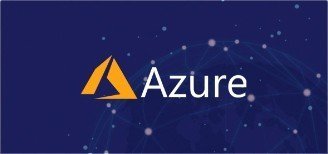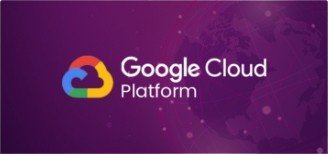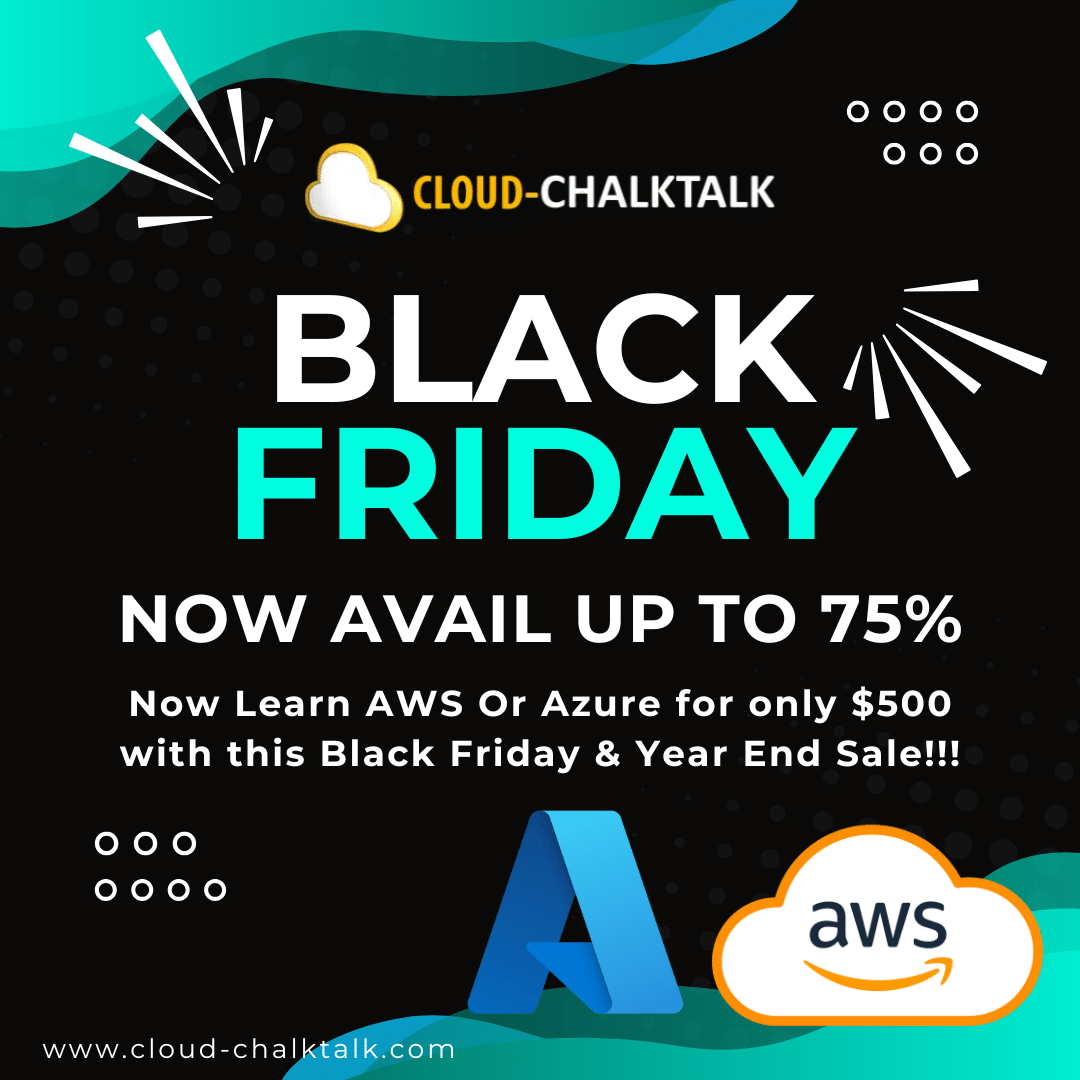Have any question?
AWS Certified Solutions Architect Associate Training
Learn how to design and build systems on AWS. Learn how to collect, ingest, store, process, and visualize data. Master IAM, EC2, VPC, and boost your cloud career.
Required Exam: AWS Certified Solution Architect Associate (SAA-C02)
Job Roles: Cloud Software Engineer, AWS Cloud Architect, Operational Support Engineer
Cloud Chalktalk is a Houston TX based company and provides both Online and In classroom AWS Certification deliveries in 25 major cities of United States.
- Overview
- Audience
- Prerequisites
- Curriculum
- LIVE Project
- Exam Review
- Exam Concepts
- View Schedule
Key Highlights
Overview - AWS Certified Solutions Architect
AWS Certified Solutions Architect Associate course is designed to cover the fundamentals of building IT infrastructures on the AWS platform.
Many people think of the cloud as a nebulous, invisible place or abstract model. But in reality, the cloud is just a type of computing where individuals and businesses rely on a third party to manage their data and computer processing via the internet. Cloud Chalktalk provides the best aws training. The course will guide you to optimize the use of the AWS Cloud by understanding AWS services and how they fit into cloud-based environments. Solution architectures vary, depending on the industry, areas of application, and the size of the business. This course will equip you with the knowledge of AWS Cloud best practices and recommended design patterns to help you think and build optimal IT solutions for your clients on AWS.
The course contains case studies that represent how some AWS clients have designed their infrastructures and the strategies and services they have implemented. It also gives you ample opportunities to develop a variety of infrastructures and solution models via a guided, hands-on approach.
According to Glassdoor, the national average salary for an AWS Solution Architect is $118,154 in the United States.
5 Best Paying AWS Solutions Architect Jobs in the USA.
Top 10 Cities Average Salary for AWS Solutions Architect in the US.
Objective
This AWS Certified Solutions Architect Associate course will learn to:
1. Make architectural decisions based on AWS-recommended architectural principles and best practices.
2. Leverage AWS services to make your infrastructure scalable, reliable, and highly available.
3. Leverage AWS managed services to enable greater flexibility and resilience in an infrastructure.
4. Make an AWS-based infrastructure more efficient to increase performance and reduce costs.
5. Use the Well-Architected Framework to improve architectures with AWS solutions.
Audience
- This course is meant for you if you are a:
- Solutions architect
- Solution design engineer
- Beginners/Interested to jump in IT through cloud
To avail career services assistance along with this AWS Solution Architect course, participants can jump on to the Cloud Expert Program
Post the completion of AWS Solutions Architect Associate, you can opt for Solutions Architect Professional.
Prerequisites
- For ensuring the best learning experience and maximum impact, the course is a perfect blend of theory and practical hands-on experience.
- No Prerequisites needed, however prior hands on experience in working on any cloud architecture is recommended.
Curriculum
Cloud Computing Fundamentals
- What is Cloud?
- Underlying technologies that power the cloud
- NIST definition of the word “Cloud”
- Cloud Computing Models
- Cloud Service Models
IAAS
PASS
SAAS
7. Cloud Deployment Model
Private
Public
Hybrid
Cloud Providers Quick Comparison
History & Introduction to AWS
- What is AWS?
- AWS pace of Innovation
- Gartner Magic Quadrant IAAS leader
- AWS Services Stack Overview
- Regions
- Availability Zones
- Point of Presence
- Concept of High Availability
- Multi-AZ configuration Models
- AWS Shared responsibility Model
- Concept of Virtualization
- Virtual Servers & EC2 Instances
- Features of EC2 Instances
- EC2 Instance Families
- Bare Metal
- Elastic GPus
- VMware on AWS
- Naming Convention & Invention
- Billing Models
- On-Demand
- Reserved Instance
- Spot Instance
- Saving Plan
- Capacity Reservation
10. Mixed Usage of billing Models
11. Instance Tenancy Models
- Shared Host Instance
- Dedicated Host
- Dedicated Instance
12. AWS Nitro System
13. AWS Outposts
14. EC2 labs
- AWS Console Overview
- Creating EC2 Instances
- Creating Key Pairs
- Logic Options to EC2 Instances (Putty/Win/mac/Linux)
- Configuring an application inside EC2 Instance
- Stopping & Starting EC2 Instances
- Terminating EC2 Instances
- EC2 Bootstrap configurations
- EC2 Instance Data & Metadata
- EC2 Hibernate
- Assigning Private & Elastic IPs
- EC2 Placement Groups
LINUX Basics
- Basics of Linux for AWS
- Linux Installation and Basic commands overview
- Web Server and Services Configurations
- AWS Storage Portfolio
- What is Block Storage
- Features of EBS
- EBS connectivity Models
- EBS Architecture
- Instance Store/ Ephemeral storage
- Types of EBS Volumes
- HDD vs SSD
- EBS Volumes Comparison
- Snapshots & AMIs
- EBS labs
- Configuring EC2 instances with EBS & Instance Store
- Modify Exiting Volume Size
- Add additional EBS Volumes
- Create snapshots
- Automating Snapshot Creation
- Create EC2 Launch Templates
- Concept & need for Load Balancing
- Classic Load Balancer
- Application Load Balancer
- Network Load Balancer
- ELB comparison
- Load Balancer Capacity Units (Billing Models)
- ELB labs
- Create Classic Load Balancer
- Configuring EC2 Instances with ELB
- Add pages and to check Round Robin Routing
- Application Load Balancer Working Demo
- What is Object Storage?
- S3 features
- Buckets & Objects
- Structure of S3
- Internal Storage Architecture of S3
- S3 Charge Methodologies
- S3 storage Classic Pricing
- Use cases
- Archival Storage
- Features of glacier
- Glaciers Retrievals
- Multi Part Upload
- S3 Access Points
- Labs
- Create buckets
- Uploading Objects into buckets
- Object & Bucket Permission
- Bucket properties
- Host static website on S3
- S3 Versioning
- S3 Bucket Replication
- S3 Lifestyle Policy
- S3 Encryption
- Transfer Acceleration
- S3 logging
- S3 Analytics & Metrics
- Additional Features Walkthrough
- 3rd party Apps for S3 Uploads
- Glacier Vaults
- Glacier Vault Lock
- What is File Storage?
- File storage classifications
- Sharing Data across multiple EC2s
- Features of EFS
- Traditional NFS vs EFS
- FSx for Windows & FSx for Lustre
- AWS Storage Gateway
- File Gateway
- Volume Gateway
- Tape Gateway
8. AWS DataSync
9. AWS Transfer for SFTP
10. AWS Snow family
- Snowball & Snowball Edge
- Snowcone
- Snowmobile
11. AWS Backup
12. Labs
- Create EFS Share
- Attaching EFS to EC2 instances
- Sharing Data between Instances using EFS
- Creating FSx for Windows Share
- Attach windows & Linux Systems
- Connect On-prem to FSx share over VPN
- Configuring Storage Gateway-File storage
- Configure Storage GW with On-prem
- Backup jobs, vaults & Protected Resources
- Configure & automate AWS Backups for EC2 instances & other resources
- Life Before VPC
- VPC concepts & Architecture
- Components of VPC
- Networking Basics- IP Addressing
- Subnetting
- Private IP ranges & Reserved IPs
- VPC Routing
- NAT Gateway
- VPC Endpoints & Interface Endpoints
- VPC Security & Logging
- Security groups vs NACLs
- Labs
- Creating a VPC
- Create Subnets
- Create Internet Gateway
- Create & Configure Route Tables
- Using a VPC for EC2 Instance
- NACLs Configuration
- Elastic IPs
- Connecting VPCs with peering
- VPN Endpoints Creation
- Cross region VPN connectivity
- Mapping domain to Route53
- Domain Name Basics
- Global DNS Query Routing Flow
- Common DNS Record Types
- Route 53- DNS as a service
- Routing Policies
- Simple Routing Policy
- Latency Based Routing (LBR)
- Weighted Routing Policy
- Geolocation Routing Policy
- Failure Routing Policy
7. Labs
- DNS lookups
- Creating Hosted Zones
- Adding Records in Route 523
- Simple record creation
- Weighted routing Demo
- Geo -location based routing demo
- Health checks & Failover routing
- Shared Responsibility Model
- IAAS vs PAAS vs SAAS Security Model
- Identity & Access Management
- IAM Components
- Users, Groups, Policies & Roles
- IAM Policy Evaluation Flow
- IAM Best Practices
- Labs
- Activating MFA on Account
- Creating IAM users
- Creating IAM groups
- Assigning Users to Groups
- Assigning Policies
- Creating Custom Policies
- Live Testing Policies
- AWS Certificate Manager (ACM)
- IAM User Roles & Assuming Roles
- Database types & Use cases
- AWS Databases Services portfolio
- Relational Database Service (RDS)
- RDS Engine Types
- RDS Single AZ vs Multi AZ Availability pattern
- Amazon Aurora
- High Availability Aurora Architecture
- Read Replicas
- Automated Backups
- Snapshots Use Case
- RDX Proxy
- AWS Database Migration Service Overview
- AWS Schema Conversion Overview
- Difference between SQL vs NOSQL Database Types
- DynamoDB
- ElastiCache
- labs-Mini Projects
- Create DB Subnet Group
- Create MYSQL RDS Instance
- On EC2 Install an application that required DB
- Configure & Connect that application to database
- Database manual Login & Configuration
- Monitoring Application Modification directly on DB
- Create Aurora Database
- Actual Database Migration using DMS from MYSQL to Aurora
- Switch Application to Aurora after Migration
- DynamoDB table Creation and querying data
- Elasticache setup & Configuration with application
- Testing Application Performance with Elasticache
- Elastic Beanstalk Overview
- Manual Deployment vs EB Automation
- Labs
- Create a WordPress Application Environment with RDS Database and EC2 Instance Via Automated Elastic Beanstalk Deployment.
- Blu/Green Deployment Scenarios
- Cloud Watch Monitoring & Features
- Alarms
- Notifications
- Cloud watch Logs
- Custom Metrics
- Cloudwatch Agent
- Triggering Autoscaling
- AutoScaling: Vertical vs Horizontal Scaling
- Provisioned Capacity vs Autoscaled Capacity
- Autoscaling Policies
- Autoscaling Groups
- Launch COnfigurations
- Lifecycle Hooks
- Triggering Autoscaling with Cloudwatch
- Labs
- Configure Cloudwatch Agent
- Create Cloudwatch Alarms
- Create Cloudwatch Monitoring Dashboards
- Cloudwatch Billing Alarms
- Cloudwatch Event Filtering & Custom Metrics
- Create AMI for Autoscaling
- Create Autoscaling Launch configurations
- Create an Autoscaled Application Environment
- Target Tracking, Step Scaling, & Simple Scaling Policies.
- Simulate demo environment failure to test Autoscaling
- Edge locations & points of presence
- CloudFront- Global CDN
- Caching tiers & Request flow
- Global Accelerator Overview
- Regional, Multiregional Deployment vs Global Accelerator scenario
- Labs
- Create a CloudFront distribution linked to an S3 bucket as the origin
- Test the speed /latency different from the origin v/s CloudFront cache
- Cache Invalidations
- Global Accelerator Labs is covered in the next model
- API calls via Command Line Interface
- Automating Infrastructure deployment with CloudFormation
- Templates, Stacks & Changesets
- Analyzing sample custom CloudFormation templates
- Simple email service overview and features
- Simple Notification Service Overview and features
- Labs
- Creating IAM user for CLI
- Configuring CLI profile on EC2 and Local Machine
- IAM Roles
- Multi Account Access via Roles
- Creating and deploying a CLoudFormation Stack
- CloudFormation Designer
- CF TEmplate Customizations
- History progression toward microservices and Serverless
- VMs vs Container Technology
- Serverless-AWS Lamda Overview
- Container Services: Amazon ECS, EKS, & Fargate Overview
- ECS components and features
- Simple Queueing Service Overview
- Concept of APIs and API GW overview
- Labs
- Create an ECS Application
- Lambda console Overview
- API GW Queries
Analytics:
Amazon Athena
Amazon Elasticsearch Service (Amazon ES)
Amazon EMR
AWS Glue
Amazon Kinesis
Amazon QuickSight
AWS Billing and Cost Management:
AWS Budgets
Cost Explorer
High Availability LIVE Project
All the modules are 90% hands On with respective labs. On top LIVE project will help you take the concept home.
Creating a multi tier live web application infrastructure environment using AWS Services.
Services used in this project:
- 1. EC2 & Autoscaling
- 2. ELB
- 3. EBS & AMIs
- 4. EFS & Elasticache
- 5. VPC, subnets, Route Tables, Internet GW, NAT GW (optional) & VPN Endpoint.
- 6. S3 & Route53
- 7. RDS, CloudWatch & CloudFront
- 8. KMS
Load testing the application.
Exam Review
Exam Name: AWS Certified Solution Architect Associate (SAA-C02)
Exam Length: 130 minutes
Format: 65 questions, either multiple choice or multiple response
Delivery method: Pearson VUE and PSI; testing center or online proctored exam
Tools & Concepts covered in the exam
The list below helps you to understand the general scope of services, features or technologies on the exam. The order is no indication of relative weight or importance. Some services or technologies may be covered more than others in the exam.
Compute
Cost management
Database
Disaster recovery
High availability
Management and governance
Microservices and component decoupling
Migration and data transfer
Networking, connectivity, and content delivery
Security
Serverless design principles
Storage
COURSE AT A GLANCE
DURATION
1 month (~30 hrs)
MODALITY
Instructor-led Online, In Classroom
LEVEL
Intermediate
Call Us
(832) 666-7637
Recent Blogs
Docker Swarm Vs Kubernetes: An In Depth Comparison To Help You Decide
FAQS- AWS Solutions Architect
Please refer the tables above for top 10 cities average salary for AWS Solutions Architect in the US.
No. not mandatory. No coding or programing is required. AWS Solutions Architect Associate is the solely one course by AWS, which is meant for both non technical and technical people. It acts like a bridge between non technical and technical professionals.
No prerequisites are needed. As we cover the fundamentals, Cloud Practitioner and Linux Basics for FREE along with AWS Solutions Architect Course.
We recommend you to read the study guide on our resource page for AWS Solutions Architect Associate
No worries! You can just wait for 14 days and reappear for the exam.
Yes. From march 2020, all the AWS Certifications Exam including AWS Solution Architect can be take from home and are called a proctored exams, where in your device (laptop, desktop,.. ) is connected to the AWS during the time of Exam.
For Beta Exams, 90days is the time period. And for most percentage based exams it is delivered via email within 5 days.
Please Note: On completing the exam, the testing screen shows PASS or FAIL notification.
AWS Solutions Architect Associate Certificate is valid for 3 years like any other AWS Certifications.
They have deep knowledge of AWS used for designing AWS Cloud instance for web applications.
They are responsible for look and feel of the applications and interactions of internal modules.
They design the effective solutions for cloud architecture and build strategies to reduce costs and improve efficiency.
Please check the Exam Review above on this page for clarity. 65 questions & 130 minutes
AWS Training in Other Locations
Online & In ClassRoom
Relevant Cloud Certifications Programs

AWS Certifications
Learn more on all the levels of AWS Certifications

Azure Certifications
Dig deeper with all the levels of Azure Certifications.

GCP Certifications
Know more on all levels of Google Cloud Certifications.
We are an exclusive cloud training and development company. We teach IT professionals, business leaders and fresh aspiring cloud professionals.
- 5206 FM 1960 Rd West, #214, Houston TX 77069
Sign up for our mailing list to get latest updates and offers.
Quick Links
Company
Discover
Work With Us
Working Hours
- Mon to Fri : 8 am to 6 pm CST
- Sat : 8 am to 2 pm CST
- Sun : Closed


